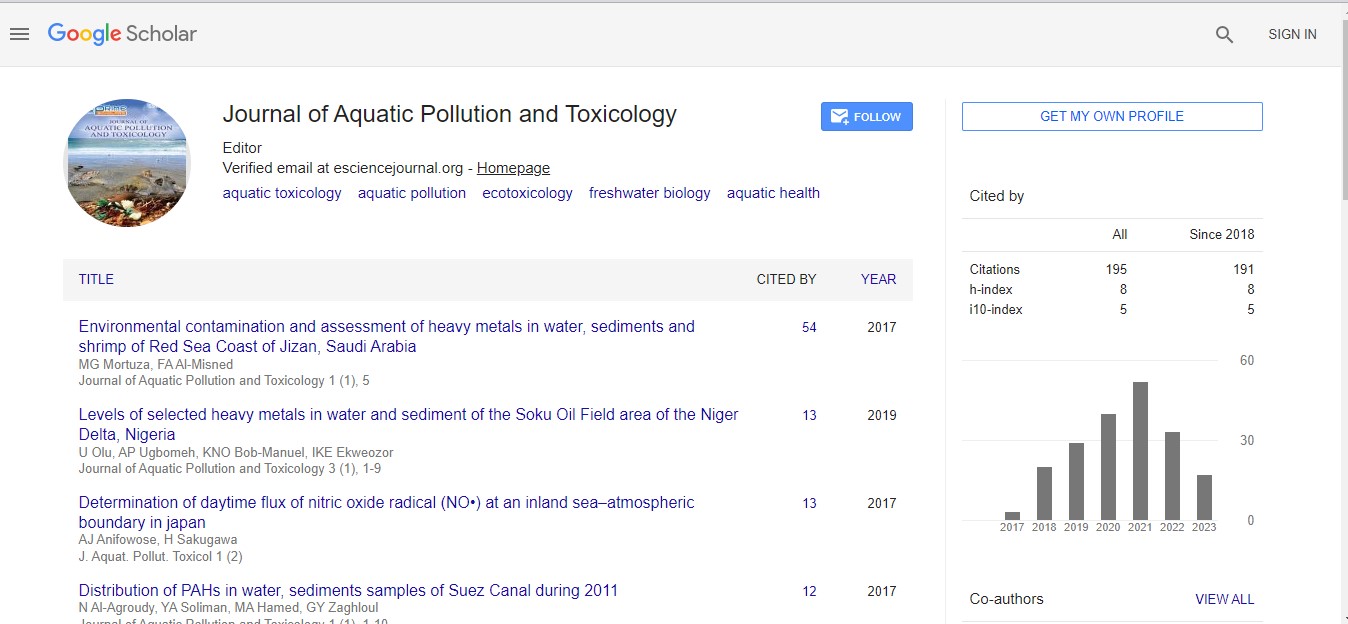Research Article - (2024) Volume 8, Issue 3
Phytoremediation Ability of Aquatic Fern (Azolla pinnata) in Lead and Zinc
Shaik Umme Salma1* and
AT Ramachandra Naik2
1Department of Aquatic Environment Management, College of Fisheries, Manglore, India
2Department of Aquatic Environment Management, College of Fisheries, Karnataka Veterinary, Animal and Fisheries Sciences University, Kankanady, Near Yekkur, Mangaluru-575 002, India
*Correspondence:
Shaik Umme Salma, Department of Aquatic Environment Management, College of Fisheries, Manglore,
India,
Email:
Received: 14-Mar-2024, Manuscript No. IPJAPT-24-19192;
Editor assigned: 18-Mar-2024, Pre QC No. IPJAPT-24-19192 (PQ);
Reviewed: 01-Apr-2024, QC No. IPJAPT-24-19192;
Revised: 14-Jul-2024, Manuscript No. IPJAPT-24-19192 (R);
Published:
21-Jul-2024, DOI: 10.36648/2581-804X.8.3.21
Abstract
Heavy metals are environmental pollutants and their toxicity is a problem in increasing significance of ecological, evolutionary and nutritional reasons. They are ubiquitous in environment and higher concentrations poses serious threat to the aquatic ecosystem. The remediation of aquatic environment by aquatic plants known as phytoremediation is an emerging area of research. Hence, an effort was made to understand the role of aquatic fern Azolla pinnata in absorption and level of accumulation so as to understand the extent of phytoremediation value in aquatic environmental studies.
Accumulation profile of heavy metals in Azolla pinnata exposed to 25%, 50%, 75% and 100% dilutions of sewage and aquaculture effluents was carried out. Atomic absorption spectrophotometric analysis of sewage effluent accumulation in Azolla pinnata showed initial concentration of metals such as Pb and Zn, were 0.085 and 0.060 ppm respectively. After 42 days of exposure, then metals were accumulated in Azolla pinnata concentration to an extent of 0.933 and 0.074 ppm respectively. The order of concentration accumulated in the plant is Pb>Zn. The plant when exposed to aquaculture effluent, the accumulation concentration of Pb and Zn were 0.853 and 0.914 ppm in the order of Zn>Pb. Results revealed that the accumulation of heavy metals in test plant varied with different effluents concentrations and the duration of exposure was unfirmed that it is directly proportional to its concentration. It is evident from the present investigation that Azolla pinnata could be used as phyto-tool for remediation of heavy metals from different effluents. In order to confirm the exact amount of accumulation of heavy metals, various other effluents could be exposed to varieties of plants which are having phytoremediation may be experimented.
Keywords
Azolla pinnata; Sewage effluent; Aquaculture effluent; Phytoremediation
Introduction
Increased agriculture and aquaculture activities, industrialization
and urbanization have resulted in the discharge of untreated
wastes containing heavy metals. In recent years, this has
become a global problem and the aquatic systems are
severely affected as the large amount of wastes easily enter
into water bodies through runoff and result in contaminations
of water.
Unlike other types of contaminants, heavy metals cannot be
eliminated from the environment and pollutants are of great
concern as they cause deterioration of life sustaining quality
of water and thus damage both aquatic fauna and flora [1-4].
The Sewage contains nutrients but when it is not optimally
used may cause eutrophication in receiving waters. Hence,
better discharging into water bodies could be useful for
irrigation or fooder cultivation [5]. Generally, heavy metals
remove or eliminate physically or to transform into non-toxic
form with the help of various conventional technologies
including electrocoagulation-flotation reverse osmosis, electro
dialysis, chemical precipitation, ultra filtration, chemical
oxidation, and reduction, electrochemical treatment,
adsorption, coagulation-flocculation, ion exchange, etc. [6,7].
All these methods are costly and not eco-friendly, hence in
order to overcome this, a special technique has been adopted
and one such method is bioremediation, among them is
phytoremediation which plays an potential role. The term
phytoremediation originate from Greek word phyton meaning
plant and Latin word remediare means remediate and refers
to the treatment of polluted water or soil by plant species [8].
Different phytoremediation techniques such as phytoextraction,
phytostabilization, phytovolatilization, rhizodegradation,
phytodegradation and rhizofiltration have been extensively
determinated (Figure 1) [9].

Figure 1: Phytoremediation mechanisms.
Phytoremediation is one of the biological wastewater
treatment methods by using plant based system for removing
the contaminants from various natural resources. To clean up
the contaminant water, selection of an appropriate and
efficient plant system should have high uptake of both organic
and inorganic pollutants, grow well in polluted water and be
easily controlled in quantitatively propagated dispersion [10].
It is a promising clean up technology for wastewater. The
remediation techniques utilizes specific planting rearrangement,
floating plant systems and numerous others configuration
[11].
The capacity of vascular aquatic plans to assimilate nutrients
from polluted water has been recognized for several years.
According to Rogers and Davis, nutrient removal efficiency
of a system containing plant will depend on the type of
aquatic plant, growth rate of plant, nutrient composition
of water and physico-chemical environment in the water.
The significance of the study is useful in detecting heavy
metal contamination thereby Azolla could be one of the tools
in determining its effect on food chain. The study enables to
understand effect of water contamination and variation of
physico-chemical characteristics of different wastewaters. The
following objectives were considered for the investigation:
• To assess the phytoremediation efficacy of aquatic fern, Azolla pinnata to different concentration of effluents.
• To investigate accumulation ability of heavy metals in
aquatic fern, Azolla pinnata.
Materials and Methods
Azolla Procurement
The floating Aquatic fern, Azolla pinnata was collected from
ICAR-Krishi Vigyan Kendra, Dakshina Kannada, Mangaluru and
brought to the laboratory of department of aquatic
environment management and maintained in ambient
conditions. The species was identified using standard
literature [12]. The young and healthy Azolla pinnata plants
selected were acclimatized for two weeks in polythene tubs
(10 L capacity) containing Hoagland's solution.
Collection of Water Samples
Domestic sewage was collected from:
• Sewage treatment plant located at Bajal area near
Jappinamogeru, Mangaluru and
• Aquacultue waste water was collected from shrimp farm
drainage point located at Kumta taluk, Uttara Kannada
district.
The collected wastewater samples were transported to the
laboratory in polythene cans (5 L) and used for the experiment
following dilution at different concentrations.
Analyses of Wastewater Sample
Physico-chemical characteristics such as water temperature,
Turbidity, Total Dissolved Solids (TDS), Electrical Conductivity
(EC), Total Suspended Solids (TSS), pH, Dissolved Oxygen (DO),
Chemical Oxygen Demand (COD), Ammonia (NH4), Nitrite
(NO2), Nitrate (NO3) and Phosphate (PO4) were analyzed
following the procedure of standard methods [13].
Experimental Design
About 50 g of plant material was taken from the original stock
maintained under laboratory conditions and introduced into
separate glass aquarium (25 liters capacity with a depth of 9
feet) containing known concentrations of different wastewaters.
A control was also maintained separately filled with tap water.
Experiments for Sewage and aquaculture effluent samples
were carried out in five concentrations in triplicates as shown
in Figure 2.
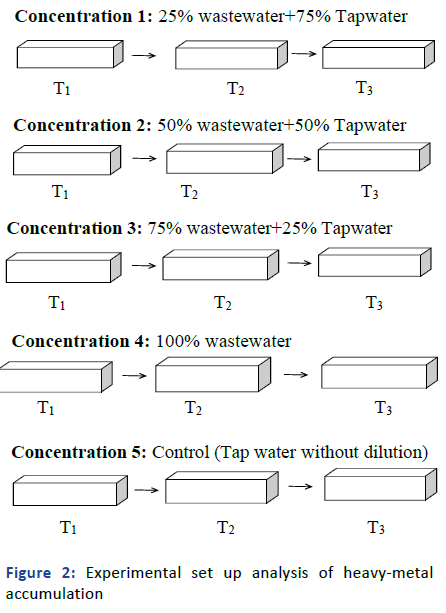
Figure 2: Experimental set up analysis of heavy-metal
accumulation
Concentration 1: 25% wastewater+75% tap water
Concentration 2: 50% wastewater+50% tap water
Concentration 3: 75% wastewater+25% tap water
Concentration 4: 100% wastewater
Concentration 5: Control (tap water without dilution)
Samples were drawn from each tank at weekly intervals for
analysis of physico-chemical characteristics of wastewater. The
plants were harvested from at 7, 14, 21, 28, 35, 42 days of
exposure to different concentration of both the effluents. The
plant was thoroughly washed with distilled water and dried at
80°C in an oven for 24 hours to achieve constant weight. The
dried plant material was then blended to obtain powder and
used for mixed acid digestion. One gram powder was taken in
a digestion tube containing 2 ml of 60% perchloric acid, 5 ml of
conc. HNO3 and 0.1 ml of conc. H2SO4. After gentle swirling, it
was digested slowly on moderate heat with a gradual increase
in temperature. The mixture was digested till the appearance
of white fumes.
The digested samples were cooled and diluted with double
distilled water and filtered through Whatman filter paper No.
42 into 100 ml volumetric flask and volume was made up to
the mark by adding distilled water. The estimation of heavy
metal contents in both treated and control plants were
carried out using atomic absorption spectrophotometer with
air acetylene oxidizing flame and metal hallio cathode lamps
at fisheries research and information center (Inland), Hebbal,
Bengaluru.
Statistical Analysis
The data obtained were subjected to One Way Analysis of
Varience (ANOVA) and Duncan test using SPSS package (16th editionn) to draw the inference at 95% confidence at p<0.05
significance.
Results and Discussion
The present research has revealed the role of free floating
macrophyte (Azolla pinnata) in phytoremediation technology.
This macrophyte has showed an excellent performance in
removing the metals and was able to remove huge amount of
Heavy metals in 42 days of experimental period. Physico-chemical
analysis of the effluents exposed with Azolla pinnata showed the presence of metal ions Lead (Pb) and Zinc (Zn) in
different concentrations but within the permissible limit given
by CPCB (Table 1).
| Parameters |
Units |
Sewage effluent |
Aquaculture effluent |
| Water temperature |
°C |
28.15 |
27 |
| pH |
No units |
7 |
6.35 |
| EC |
S/m |
391 |
7.71 |
| Turbidity |
NTU |
3.06 |
2.31 |
| DO |
mg/l |
7.13 |
5.43 |
| COD |
mg/l |
55.5 |
24.8 |
| TDS |
mg/l |
650 |
1220 |
| NH3 |
µg-at./l |
5.5 |
15.4 |
| NO2-N |
µg-at./l |
3.22 |
3.04 |
| NO3-N |
µg-at./l |
9.91 |
11.1 |
Table 1: Physico-chemical analysis of the effluents.
Accumulation of lead in Azolla pinnata exposed to sewage and
aquaculture effluents: In sewage effluent the higher level of
lead accumulation was observed in the Azolla pinnata under
treatment as compared to the test plant in control group
(Figure 3).
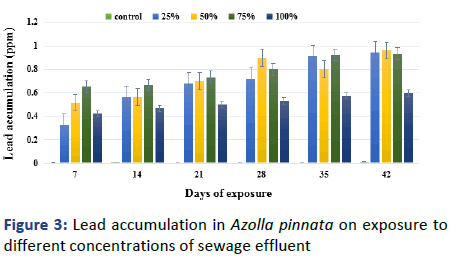
Figure 3: Lead accumulation in Azolla pinnata on exposure to
different concentrations of sewage effluent
The concentration of lead in the roots and shoots kept on
increasing with period of exposure. After 7 days the
accumulation was highest in 75% (0.653 ppm) treatment and
after 42 days of exposure the highest were recorded in the
25% (0.943 ppm) treatment, possibly due to the high
translocation factor. Accumulation of llead by Azalla pinnata was correlated with damage caused by the loss of essential
nutrients capacity. Azolla pinnata showed the maximum
removal percentage of lead from sewage effluent on 42nd day.
At an initial accumulation concentration of lead in Azolla
pinnata was 0.085 ppm. Sharma observed, after 30 days of
exposure of lead, the accumulated lead increased to 0.945 in Azolla mexicana [14]. Thus, the concentration of the
accumulated Heavy metal (Lead) in the Azolla pinnata was
higher when compared to control.
As the days advanced the accumulation of lead also showed
increased trend in aquaculture effluent in all the treatments
(Figure 4).
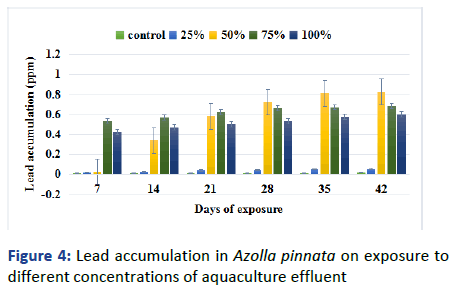
Figure 4: Lead accumulation in Azolla pinnata on exposure to
different concentrations of aquaculture effluent
Whereas the maximum accumulation were observed in the
75% (0.683 ppm) concentration on 42nd day of exposure. As
the older shoot remobilize the lead content to younger leaves from older senescing parts and Lead accumulated in the
poplast and in the symplast of Azolla plants exposed to
various concentrations of the heavy metal. Robertz observed
similar results in Azolla caroliniana. Muramoto and Oki have
carried out similar experiments for the removal of lead using
water hyacinth [15].
Accumulat on of zinc in Azolla pinnata exposed to sewage
and aquaculture effluents: In sewage effluent the higher level
of zinc accumulation was observed in the Azolla pinnata under
treatment as compared to the test plant in control group
(Figure 5). After 7 days the accumulation was highest in 100%
(0.423 ppm) treatment and after 42 days of exposure the
highest were recorded in the 50% and 75% (0.933 ppm)
concentration. The concentration of zinc remaining in sewage
effluents increases with the passage of time and then remains
almost constant due to saturation. As soon as the saturation
state is reached, it seems that it is not possible for these
plants to further absorb zinc significantly. Similar results have
also been reported by Wolverton and Donnald, Chigbo et al.,
Tatsuyama et al., who used water hyacinth for removal of zinc
[16,17].
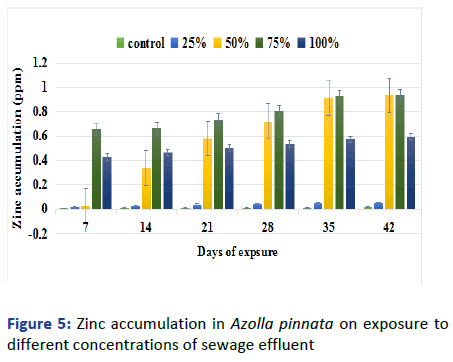
Figure 5: Zinc accumulation in Azolla pinnata on exposure to
different concentrations of sewage effluent
As the days increases the accumulation of zinc was increased
in aquaculture effluent almost in all treatments, whereas the
maximum accumulation were observed in the 75% (0.914
ppm) concentration on 42nd day of exposure. Maximum
accumulation of zinc could be due to electro chemical gradient
which generate by electron transport and also due to activates
the insoluble to the soluble state in effluent Thereby increases
the ability of aquatic plants to absorb zinc. Mishra and Tripathi
reported that with increasing zinc in aquatic plants were able
to remove and accumulate high amounts of metals [18]. Azolla species also removed substantial amounts of these
metals, indicating that this species can be used effectively to
remove Zn (Figure 6).
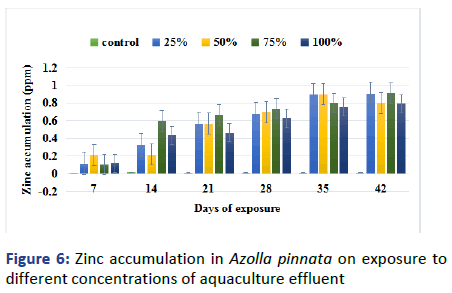
Figure 6: Zinc accumulation in Azolla pinnata on exposure to
different concentrations of aquaculture effluent
Conclusion
In all, the aquatic fern, Azolla pinnata a candidate species had
been found to be an effective floating aquatic plant in
absorbing heavy metals at different concentrations of
selected effluents. The current studies suggest that, dilution
of two different effluents. The current study suggest that,
dilution of two different effluents at varying concentrations in
accordance with earlier trials, standardization becomes a
reference for recommendations to take up further studies.
References
- Nriagu JO, Sprague JB (1987) Cadmium in aquatic environment of copper sulphate to fresh water prawns. J Environ Biol. 27(3):585-588.
- Mason CF (1996) Biology of fresh water fishes. Longman Scientific and Technical,New York, U.S.A
- Sharma UD, Lodhi HS, Khan MA, Verma RS (2005) Acute toxicity of serum and glycogen reserves in the liver and muscle tissues of Cyprinus carpio L. Turk Vet Anim Sci. 29:113-117.
- Agarwal SJ, Srinivastava AK (2005). In effect of endosulfan on certain sedimentation dried lake. Sci Total Environ. 293(1-3):177-189.
- Wright DA, Welbourn P (2002) Environmental toxicology. Cambridge University Press, United Kingdom.
- Hu CY, Lo SL, Kuan WH, Lee YD (2005) Removal of fluoride from semiconductor wastewater by electrocoagulation-flotation. Water Res. 39(5):895-901.
[Google Scholar] [Crossref] [PubMed]
- Miretzky P, Saralegui A, Cirelli AF (2004) Aquatic macrophytes potential for the simultaneous removal of heavy metals (Buenos Aires, Argentina). Chemosphere. 57(8):997-1005.
[Google Scholar] [Crossref] [PubMed]
- Vara-prasad MN, de-Oliveira-Freitas HM (2003) Metal hyperaccumulation in plants: Biodiversity prospecting for phytoremediation technology. Electron J Biotechnol. 6(3):285-321.
[Google Scholar]
- Ali H, Khan E, Sajad MA (2013) Phytoremediation of heavy metals: Concepts and applications. Chemosphere. 91:869-881.
[Google Scholar] [Crossref] [PubMed]
- Roongtanakiat N, Tangruangkiat S, Meesat R (2007) Utilization of vetiver grass (Vetiveria zizanioides) for removal of heavy metals from industrial wastewaters. ScienceAsia. 33:397-403.
[Google Scholar]
- Williams JB (2002) Phytoremediation in wetland ecosystem: Progress, problems and potential. Crit Rev Plant Sci. 21(6):607-635.
[Google Scholar]
- Lumpkin TA, Plucknett DL (1980) Azolla: Botany, physiology and use as a green manure. Econ Bot. 34(2):111-153.
[Google Scholar]
- APHA (American Public Health Association) (2005) Standard Methods for the examination of water and wastewater. 21st Edition. American Public Health Association, Washington DC.
[Google Scholar]
- Sharma S, Singh B, Manchanda VK (2015) Phytoremediation: Role of terrestrial plants and aquatic macrophytes in the remediation of radionuclides and heavy metal contaminated soil and water. Environ Sci Pollut Res. 22:946-962.
[Google Scholar] [Crossref] [PubMed]
- Muramoto S, Oki Y (1983) Removal of some heavy metal from polluted water by waterhyacinth (Eichhornia crassipes) Bull. Environ Contam Toxicol. 30:170-177.
[Google Scholar] [Crossref] [PubMed]
- Wolverton BC, McDonald RC (1979) Upgrading facultative wastewater lagoons with vascular aquatic plants. J Water Pollut Control Fed. 51:305-313.
[Google Scholar]
- Tatsuyuama K, Egawa H, Yamamoto H, Nakamura M (1979) Sorption of heavy metals by the waterhyacinth from the metal solutions 2. Some experimental conditions influencing the sorption. Weed Res. 24:260-263.
[Google Scholar]
- Mishra VK, Tripathi BD (2009) Concurrent removal and accumulation of heavy metals of technical and non-technical research. 4(13):33-42.
[Google Scholar] [Crossref] [PubMed]
Citation: Salma SU, Naik ATR (2024) Phytoremediation Ability of Aquatic Fern (Azolla pinnata) in Lead and Zinc. J Aqua Pollut Toxicol. 8:21.
Copyright: © 2024 Salma SU, et al. This is an open-access article distributed under the terms of the Creative Commons
Attribution License, which permits unrestricted use, distribution, and reproduction in any medium, provided the original author
and source are credited.







